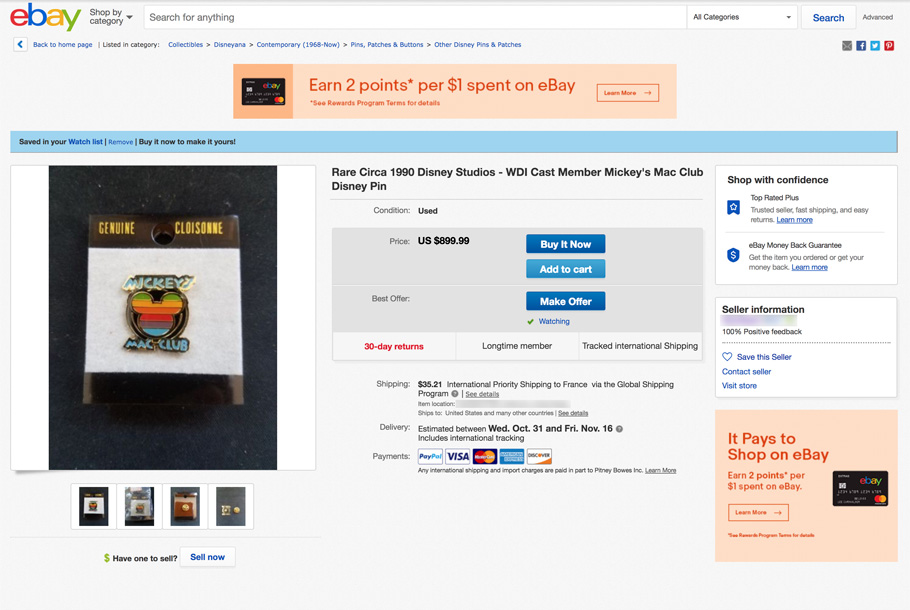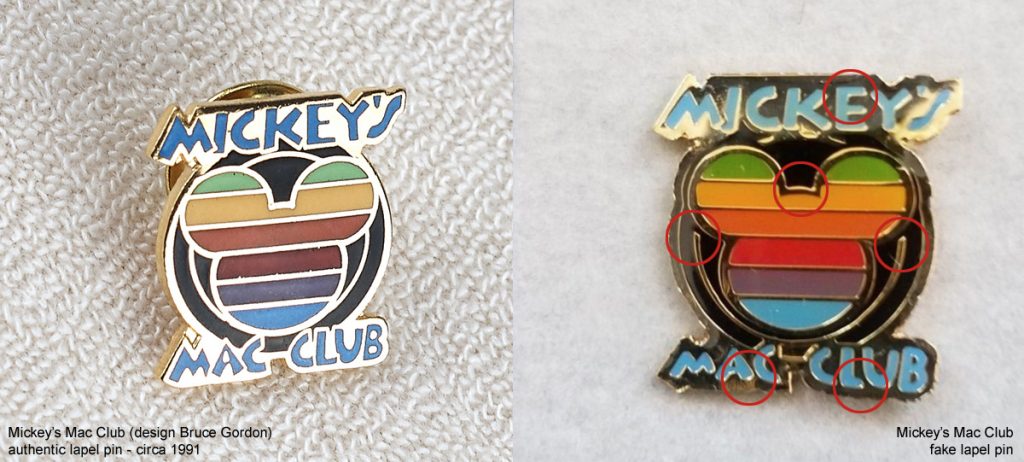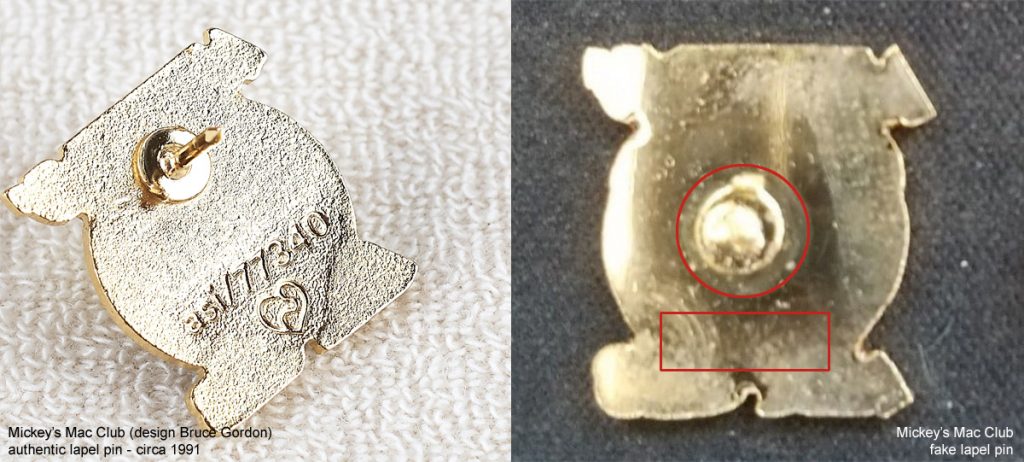Since we have been collecting Apple computer goodies for years, we are regularly solicited by collectors to authenticate objects of the Apple collection. In most cases, these are authentic objects. But with the vintage hype, Apple goodies are more and more sought after and therefore more and more coveted. This market now attracts forgers who see a good opportunity to make easy money. They manufacture a copy of a rare or very rare lapel pin in China and they try to sell it and to pocket a large profit. This is the case, for example, with Mickey’s Mac Club lapel pin, which is rightly considered as the holy grail of Apple collectibles. It is not uncommon for these very rare lapel pins to be displayed on auction sites at prices approaching several thousand of US dollars. Our attention went a few days ago on a Mickey’s Mac Club lapel pin posted under $1000. Obviously, it was a copy.

• Mickey’s Mac Club history
But let’s go back for a moment to the history of this famous lapel pin. The members of the Macintosh user group in Disney Studio (as well as Walt Disney Imagineering) had named their group Mickey’s Mac Club in the early 1990s (in 1991, to be precise). As was often the case at this time, it was decided to create a lapel pin for the members of this group. The design was entrusted to Bruce Gordon, who was the Creative Director at Walt Disney Imagineering. But the use of the name and shape of Mickey Mouse did not please the management of Walt Disney Studios. The lapel pin was banned and removed from circulation. At the same time, it entered the legend and became a very rare object for all collectors of Apple goodies.
On November 6, 2007, Bruce Gordon, founder of the Disney Macintosh group, died. This name had been changed, at the request of the companies concerned, first into “Mickey’s Mac Club” and finally into “The Mac Club”. At Walt Disney Studio at that time, there was a Mac newsletter and Bruce Gordon was “the default editor”. That’s the title he gave himself. His friends remember him as a very funny and irreverent man, curious about everything and very knowledgeable about things related to Macintosh technology. He was the one who drew Mickey’s Mac Club’s wonderful logo, taking the silhouette of Mickey inlaid with 6 colors of the Apple rainbow. After the banning of this lapel pin, Bruce Gordon could not bring himself to throw them away. He kept the remaining lapel pins at home. During the memorial service of his funeral, the forbidden lapel pins were given to the public. One of his friends said : “Bruce, it’s for you!”


• Authentic or counterfeit ?
A few years ago, we had the chance and the privilege of finding a copy of this mythical and legendary lapel pin. We have been able to compare it to other copies and we know that it is authentic. Therefore, we can say with certainty that the lapel pin that we saw on sale on an auction site is a fake, a copy. Which means that copies are now in circulation on the market and of course these copies, sold several hundred dollars have absolutely no value. It is pretty simple to recognize a genuine Mickey’s Mac Club lapel pin.
1- The authentic Mickey’s Mac Club lapel pin are of excellent quality while the copy is not.
2- The graphics of the copy is very significantly different, from several points of view. The colors of the lettering are also different (see illustration).
3- The back of the copy does not mention anything. No manufacturer’s logo (heart shape), no mention to the reference. And the position of the pin is in the center of the lapel pin.
Copying is not just an illegal and fraudulent act, it is also and above all a betrayal towards the passionate collector. It is also an insult to Bruce Gordon’s memory, although we’re sure he’d be the first to smile at it, because he had a great sense of humor. Furthermore, we do not think that a collector would like to have paid a high price for a vulgar copy. You are now warned, be vigilant. And if you have a doubt, contact us.